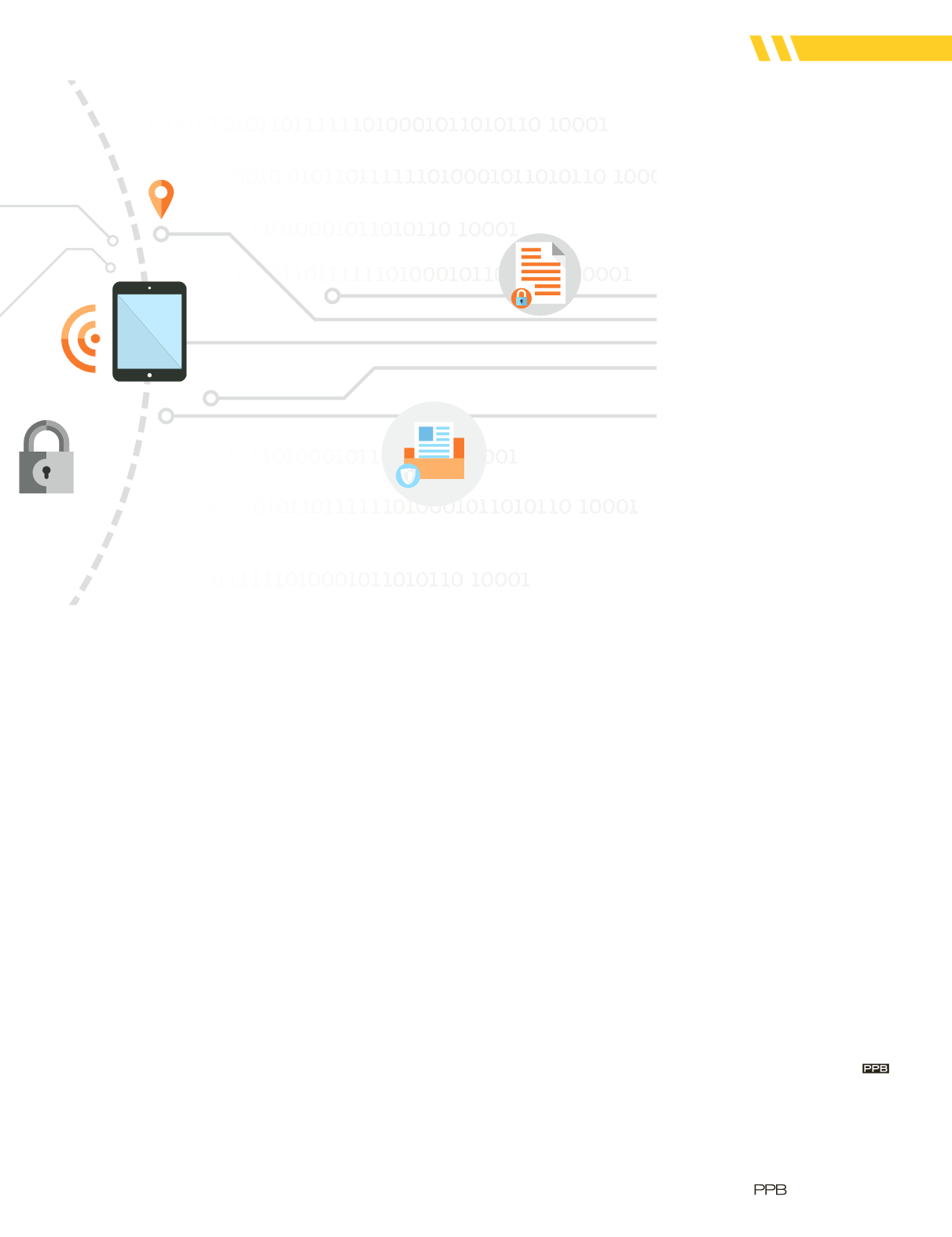

4
Store sensitive personal
information securely and
protect it during transmission.
Keep confidential information
safe when you store it and when
you send it elsewhere. Consider
whether encryption is an
appropriate option.
5
Segment your network and
monitor who’s trying to get
in and out.
Tools like firewalls
can segment your network,
thereby limiting access between
computers on your network and
between your computers and
the internet. That can reduce
the impact if a hacker makes it
past your preliminary defenses.
Another useful safeguard:
intrusion detection and
prevention tools to monitor who’s
trying to get into your network.
6
Secure remote access to
your network.
For members
of the promotional products
industry, business on the road
is business as usual. But like a
raincoat advertised as waterproof,
the weaknesses in a company’s
security setup sometimes can
show up at the seams. If you give
employees, clients or service
providers remote access to your
network, protect your system by
shoring up those entry points.
Ensure that those security
standards remain high when your
staff members work from home,
attend trade shows, or are out and
about in the course of business.
7
Apply sound security
practices when
developing or introducing new
products.
Internet-connected
items are hot sellers in the
promotional marketplace. But do
the manufacturers you work with
make it a practice to build security
in from the start? Once a product
has been distributed to thousands
of consumers, it can be difficult to
graft security on after the fact.
8
Make sure your service
providers implement
reasonable security measures.
Keep a watchful eye on service
providers. Spell out your security
expectations in your contracts
and monitor that they’re meeting
your requirements.
9
Keep your security current
and address vulnerabilities
that may arise.
Security isn’t a
one-and-done box to check. Two
ongoing tasks: Keep third-party
software updated and patched,
and move quickly to address
credible security warnings.
10
Secure paper, physical
media and devices.
Maintain high security standards
for devices, flash drives and plain
old paper. With all the attention
on network security, some crooks
do business the old-fashioned
way. In those cases, old-
fashioned security methods—a
locked file cabinet, a shredder by
the copier or a clean desk at the
end of the day—can help keep
sensitive data secure.
The FTC’s Business Center, at
business.ftc.gov, has more tips for
companies, including to-the-point
publications to help train your staff
on how to start with security.
Lesley Fair is senior attorney in the
Bureau of Consumer Protection at
the Federal Trade Commission.
|
APRIL2017
|
63
THINK
















